Carl E. Olson's Blog, page 261
November 28, 2011
Advent and the Art of Waiting
The Art of Waiting | Mother Mary Francis, P.C.C. | The Foreword to Come, Lord Jesus: Meditations on the Art of Waiting | Ignatius Insight
In the fall of 2003, when Mother Mary Francis was waiting at the Chicago airport for her return flight to Roswell after the completion ofa visitation to 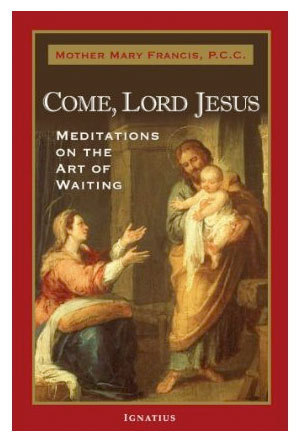 our youngest daughterhouse, she began her new book on Advent in the following words:
our youngest daughterhouse, she began her new book on Advent in the following words:
THE ART OF WAITING
1. Waiting as a child
2. Waiting in fear
3. Waiting in joyous expectation
4. Waiting in peace
5. Waiting to understand
6. Waiting in airports
7. Waiting to see the Face of God
There is this about waiting: it is multifaceted. We can wait in fear. We can wait in joyous expectation. We can be content to wait to be understood when God strikes the moment rather than trying to turn the clock, the calendar, ahead to our preferred moment of "now!" We can stand patiently or irritably in line at the airport. We can wait with the deliciousness of a child's waiting for Christmas. We can wait in peace for God to strike his own moment, reveal his own plans, unveil the demands of his love. And we can see all life and its often bewildering hours and events as a waiting to see the Face of God, which vision is less the explanation of life on earth than a revelation of the mystery of his love. It is ours to determine how to wait. And Advent dawns upon our hearts and souls each year to educate us in the art, the bliss, the peace, the pain, and the wonder of waiting.
It is our Lady who shows us how to wait.
There are two species of humanity as regards reading a book: those who begin reading on page one and arrive eventually at the final page, and those who must read the end before reading what precedes and leads to the end. All of us belong to a crossed species, even our Lady. The foremost handmaid of the Lord wanted some details, some explanation of God's doings. "Behold, I am the handmaid of the Lord." But also: "How shall this be done? I know not man." And the angel's reply was hardly something to answer the human question satisfactorily. "The Holy Spirit shall come upon thee." But who is the Holy Spirit? "And the Holy to be born of you shall be called the Son of God." These are scarcely explanations that would have elicited a reply of "Oh, I see." No, she did not see.
"Be it done to me according to your word." But how will this word function, so to speak? Blessedly comforting for us are those words of Scripture: "She did not understand." Not then, nor later, either. Gently upbraiding her boy, who was the Son of God, she was later to exercise her maternal rights by asking: "Why have you done this?" when he had been missing for three days in the temple. The reply of the Divine Child was hardly an explanation. "Did you not know that I must be about my Father's business?" What business? But we do not find her presenting more questions. "She did not understand this word that he spoke to her." So, she just went home and cooked supper for him and Saint Joseph.
Alas, because her notes were set aside for "later", this was as far as the new book had progressed before the Great Advent of the Lord in Mother's own life. He came for her on February 11, 2006, unveiling all the mysteries of the Gospel that she pondered in the passage above. We, her spiritual daughters, were left with a great legacy in the conferences Mother gave to our community during her forty-two years as abbess. She had planned to edit her conferences for Advent into a book; but the Lord changed her plans, as he had so often done before.
Eager to share the treasures she poured out upon us, we feel impelled to make them available to a wider audience. Mother did not give an orderly commentary on the Scripture readings of each day of Advent but spoke to us on whatever subject our Lord put into her heart as certain passages in the liturgy struck her. She would often reflect on the Sunday readings; for the rest, her chapters explored any of the other multitudinous facets of Advent, touching on a number of passages more than once and opening out new vistas of meaning each time. As a wise spiritual guide, Mother knew that repetition is indispensable in teaching and it was also an element of her literary style.
We have gathered together her Advent conferences given from 1967 to 2001 and spread the rich viands of her thoughts over the course of the season, striving to match the daily Mass readings as far as possible. May these ponderings of Mother Mary Francis' heart help each reader to learn more fully the art, the bliss, the peace, the pain, and the wonder of waiting!
The Poor Clare Nuns
Monastery of Our Lady of Guadalupe
Roswell, New Mexico
December 12
Solemnity of Our Lady of Guadalupe
If I read of any more stilted uses of the adjective "stilted", I might just...
... stilt somebody upside the metaphorical head by insulting them in a stiffly dignfied or formal way, with a big dash of pomposity tossed in (with an elegant and impractical flourish, of course) for good measure.
Here's what I'm referring to:
• Pastoral Associate Christine Wagberg of St. Mary Catholic Church in Royal Oak calls some of the new words in the Roman Missal "a bit funky" but says all Catholics around the world will now be "on the same page." But lifelong Catholic Carmen Gudan, 63, of Dearborn calls it a "giant step backward." "It's stilted," she told the Detroit Free Press. "I can't stand it. It's just repulsive." (Source)
Ms. Gudan doesn't seem to notice, however, that the word "repulsive" is from the Medieval Latin word, repulsivus, and is therefore designated strictly and objectively as stilted. Her anger stinks of hypocrisy (the word "hypocrisy", you'll note, has Greek, not Latin, origins).
• A decade in the making, the new Mass is a more precise translation from Latin than the current version, peppered with more theological words and Biblical images. Supporters say it will bring a more reverent, solemn tone to services, while detractors think the new language is too obscure or stilted. (Source)
Which leads me to conclude that the new language is still less obscure than the identities of its detractors.
• But Monica Malpezzi thinks the new language is stilted and confusing and will only create a barrier between people and God. "If we have to scramble for understanding in what our prayer life is, I think that will make it harder for us to feel that God is right there with us." (Source)
Make note to self: the Church's liturgy is about Ms. Malpezzi's feelings. We can only pray—together, of course—that God can bridge the dizzying chasm between her inarticulate longings and His omniscience. She can take some consolation in this stitled passage from the Douay-Rheims translation of St. Paul's epistle to the Romans: "Likewise the Spirit also helpeth our infirmity. For we know not what we should pray for as we ought; but the Spirit himself asketh for us with unspeakable groanings." (Rom. 8:26)
• The church hierarchy says the new translation — The Roman Missal, Third Edition — is more accurate, authentic and reverential. Catholics critical of the shift say it is a step backward to less-inclusive, more archaic and stilted language. (Source)
• Meanwhile, some Catholics are unsure of the new text. "I think they're going back to something very conservative, and I find the language very stilted," John Lee says. (Source)
I think what these folks mean to say (and here I am stealing from Jorge Luis Borges) is they are upset that the Latin original has been found unfaithful to their preferred, stiltless English translation.
• For critics, like Trautman, the changes produce prayers that sound stilted, archaic and too often obscure. "Again and again proclaimablility and comprehension are sacrificed for the sake of maintaining the Latin single-sentence structure," he wrote in U.S. Catholic magazine last year. (Source)
I hereby move that the lame and sorry creature known by the name Proclaimablility be slaughtered, drawn, quartered, and grilled over open flame, then served after uttering a short prayer offered in thanks for the Latin single-sentence structure. Domino Optimo Maximo!
• The Rev. Jan Michael Joncas, associate professor of Catholic studies at St. Thomas University in St. Paul, has written about the new translation and traveled across the country to talk about the changes. "The pastor in me says we are receiving these texts from the church, and our task is to learn how to pray them ourselves as priests and then how to help our people pray them," Joncas said. But as a scholar, Joncas believes the new translation is problematic. Not only are some passages awkward and stilted, but sentences are meandering and the phrasing is not always clear.
"It's closer to the underlying Latin but also makes a reference ... of a scriptural story where a Roman centurion tells Jesus, 'I'm not worthy to have you come under the roof of my house,'" Joncas said. "If you don't know that scripture passage ... and if you think the roof here doesn't mean the reference to the centurion and the roof of his home, but rather the roof of your mouth because you're going to be receiving a communion wafer, that can be a real mess."(Source)
Translation: Most Catholics are semi-literate dullards. And most Catholic scholars who disdain the new translation are semi-dull literates who are apparently incapable of explaining why the Mass contains blatant references purposefully and meaningfully taken from Scripture, including narratives and statements from the life of Jesus Christ.
• Despite the tendency of the church to pull together in times of trouble some are said to be "quietly seething" at the change. One senior theologian said: "The process managed to offend everybody involved who has any intellectual or moral integrity." To its supporters the new Mass is a richer text, truer to its Latin origins. Opponents say the new translation – although needed in some form – shifts too far away from the plain English style of the earlier version. They argue it is flowerier, often drawing on imperial court language and sounding stilted and artificial to modern ears. (Source)
In other words, while many Catholics still labor under the impression that pride and arrogance are serious sins and vices, dissenting theologians and disgruntled liturgists are demonstrating, in word and deed, that pride and arrogance have pride of place in the morose cubicles that line the plain, dull, shabby sanctuary of the "spirit of Vatican II".
On a personal note, let me say that no one at our parish stumbled at all on Sunday when singing the response, "And with your spiriit" to the priest. Of course, that's been the English translation in the Byzantine Catholic Churches for quite some time. Oddly enough, in all my years at Nativity of the Mother of God Ukrainian Catholic Church, I've never heard the adjective "stilted" used to describe the Divine Liturgy. Admittedly, as far as I know, the parish has never been visited by a professor of Catholic studies (not to be confused with professors of Catholic theology; Fr. Mitch Pacwa gave a talk at the parish years ago). Truly a pity, as the parish has a lovely roof (the one overhead, you dullards; not the one in your head).
• "The Roman Catholic Mass is undergoing a major overhaul." (Nov. 10, 2011)
November 27, 2011
The Worthiness of the Liturgy
From New Elucidations, by Fr. Hans Urs von Balthasar:
It is only with fear and trembling that we can approach this theme. What human liturgy could be "worthy" of the object of its veneration, before whom even in heaven all beings fall prostrate, remove their wreaths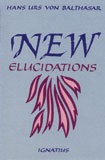 and crowns and lay them in a gesture of adoration before God's throne: "You alone are worthy, Lord our God, to receive glory and honor and power" (Rev 4:11)? This return in heaven of all honor received from creatures to him "who created everything by his will" can only bring a community of sinners on earth spontaneously to its knees, acknowledging, "Lord, I am not worthy."
and crowns and lay them in a gesture of adoration before God's throne: "You alone are worthy, Lord our God, to receive glory and honor and power" (Rev 4:11)? This return in heaven of all honor received from creatures to him "who created everything by his will" can only bring a community of sinners on earth spontaneously to its knees, acknowledging, "Lord, I am not worthy."
It would be an odd deception, if the members of this community however naive, assembled to praise and honor God, were to have any other purpose than the act of perfect adoration and self-surrender: for instance, their own edification or some undertaking or other in which they themselves, alongside the Lord who should be receiving their homage, become thematic.
In a purely monotheistic religion, the gesture of prostration is the most perfect expression of the entire person's surrender, even in large gatherings. What Christian can view the crowd in silent adoration in a mosque without being deeply moved? In the religion of the Covenant, listening to God's word, the Torah, has central place: God speaks and man obediently receives, searching with all his heart for the correct response. This may be accompanied by symbolic rites, such as the Passover meal, eaten standing and at the point of departure, the last strengthening nourishment before setting out into the desert to follow God's guidance.
But then, in the trinitarian religion, there is the enormous transformation: the sheep eaten in the family circle gives way to "the Lamb slain before the foundation of the world", "that takes away the sins of the world" and gives his Flesh and Blood as "real food and real drink". One can understand those heretics (even if one likewise understands their being condemned) who recoil from the excess of this divine mystery, imploring the faithful not to demean what is ineffable and fear-inspiring, mindful of the words of Paul: "Anyone who eats the bread or drinks the Lord's cup unworthily will be guilty of the Lord's body and blood. Therefore, let a man examine himself, " lest he "eat and drink judgment" (I Cor 11:27-29). God himself encourages us, even presses us, to "eat the Flesh of the Son of Man and drink his Blood" (Jn 6:53), if we want to attain to eternal life.
We can do this, however, only if we are mindful of the "awesome exchange"' between our guilt, which he bears, and his innocence, which he gives us on the Cross. In receiving him into ourselves, we recall that he has taken us into himself in his Passion and that, as Augustine repeatedly says, we receive the physician who heals us by our having caused his death: "For whenever you eat this bread and drink the cup, you proclaim the Lord's death, until he comes" (I Cor 11: 26). Nevertheless, we are not to approach the Lord's table embarrassed and downcast, for the Lord who wants to come to us calls us his friends for whom he has died: (Jn 15:13). He does not want us to "act like strangers" (as the disciples do at the meal by Lake Tiberias: (Jn 21:12), but to open ourselves to receive the Father's gift.
For in celebrating the liturgy, our gaze is not restricted to Jesus, but is raised to him from whom ultimately the highest of all good gifts comes: to the Father. Nor do we open our hearts and raise our minds heavenward of ourselves, but in the power of the Holy Spirit of the Father and of the Son poured into our hearts. It is solely in view of the entire triune God that the worshipping community is gathered together to celebrate God's generosity and liberality.
God's glory, the majesty of his splendor, comes with its most precious gifts to us who are to "praise the glory of his grace" (Eph 1:6). This last summons constitutes the norm and criterion for planning our liturgical services. It would be ridiculous and blasphemous to want to respond to the glory of God's grace with a counter-glory produced from our own creaturely reserves, in contrast to the heavenly liturgy that is portrayed for us in the Book of Revelation as completely dominated and shaped by God's glory. Whatever form the response of our liturgy takes, it can only be the expression of the most pure and selfless reception possible of the divine majesty of his grace; although reception, far from signifying something passive, is much rather the most active thing of which a creature is capable.
Our first question is: what is excluded from such active reception? Our second is: what form can this reception take? As we shall see, the answers to these questions are not always tidily separable, because forms that may be expressions of pure reception in certain people could become manifestations of self-admiration and worldly gratification in others.
Certainly, everything that distracts the congregation from paying attention to God and his coming and makes it revert to itself must be excluded -- except at the moment of examination of conscience, at the confession of guilt and at the Domine, non sum dignus. Anything solemn and ceremonial that does not direct hearts and minds to the one being solemnized is evil, in proportion to how much the character of the solemnity becomes detached from its object and becomes itself the center.
Now we have arrived at the ambiguity, of which we shall cite more detailed examples: that in praising God a person directs back to himself what is reserved for God alone--the praise of his glory--so that a part of its lustre redounds to himself. It often happens (and the danger seems to be even greater nowadays than in former times) that a liturgical assembly measures the success of a celebration by the degree of its own edification I the extent to which the participants "take part" and are "moved" by it, instead of letting itself be moved by God and his gifts and letting him "take over."
There are congregations that, perhaps unconsciously, celebrate themselves rather than God; and this is equally true of traditional and of progressive groups liturgies in long-established parishes as well as the freely formed services so popular among young people. This means that the criterion of the "vitality" of a liturgical service also remains highly ambiguous; it is always a question of whether it effects a vital opening and conversion of hearts or the private enjoyment of one's own vitality.
Naturally, this ambiguity comes to light in an especially acute way in the homily or sermon, which ought to have only one aim: to direct everyone's attention (including that of the homilist) to the mystery being celebrated in its inexhaustibly manifold aspects, and not to allow any of the divine luster to redound in the process to the speaker and what he is saying.
The problem becomes compounded when the correct thought is expressed that the joy of man who is redeemed and blessed beyond measure mingles with the seriousness of the "sacred exchange" which we celebrate. How both Cross and Resurrection can be experienced together in Christian life is a profound enigma, and the explanations of it are by no means unequivocal. There exists a simultaneity: deep, hidden, perhaps hardly perceptible joy in the midst of a sorrow that can completely engross a person; there is also an alteration of phases in Christian life, like the way in which changes of weather or seasons succeed one another.
In a parish communal liturgy, a reverential awareness of the gravity of the mystery together with joy over it must be expressed in a manner appropriate to the objectivity of the mystery being celebrated, though it is true that human joy can find different modes of expression n different peoples or even in people of different ages.
Once again the ambiguity comes into play: expressions of joy that are genuine praise of God, are intended as such and can be understood as such by others belong to the sphere of appropriate expressions of liturgical prayer; on the contrary, whatever verges on subjective ecstasy does not. (It is easy to distinguish the subtle symbolism, restrained to the last detail, of oriental cultic dances from those that serve to enrapture both dancer and spectators.)
Authentic Christian joy can be expressed in the way a congregation sings in unison, the way a priest says the prayers of the canon or the orations, the way a deacon delivers the sacred texts; and the Christian heart of the people can immediately distinguish this authenticity from everything that is outwardly contrived and theoretical and perhaps inwardly bored. Let no one think that giving primacy to objectivity dispenses the subject from making his contribution. This will have been best made when everyone senses that the subject is totally at the service of the mystery.
An element lacking in good taste has crept into the liturgy since the (falsely interpreted) Council, namely, the joviality and familiarity of the celebrant with the congregation. People come, however, for prayer and not for a cozy encounter. Oddly enough, because of this misinterpretation, one gets the impression that the post-conciliar liturgy has become more clerical than it was in the days when the priest functioned as mere servant of the mystery being celebrated. Before and after the liturgy, personal contact is entirely in place, but during the celebration everyone's attention should be directed to the one Lord.
The tendency of a congregation to celebrate itself instead of God will increase, imperceptibly but unfailingly, if its faith in the reality of the eucharistic event wanes. When an almost rudimentary Church, gathered to await her Lord and to let herself be filled by him, considers herself from the outset as a church to which nothing essential can be added, the eucharistic celebration will degenerate into mere symbolism and the congregation will be celebrating nothing but its own piety which existed already and feels corroborated by the community's repeated gathering.
When this happens, pharisaism is imminent. Conversely, when those assembled feel in their inmost hearts their urgent need of the Lord's coming among and in them if they are to grow together into a true Church in which each member is imbued with the Church's sentiments, then what happens objectively will arouse a corresponding subjective response.
The worthiness of the liturgy increases in proportion to the participants' awareness of their own unworthiness. It is impossible, then, to manipulate or technically produce this worthiness: if the Christian attitude of (the majority of) the congregation and of the priest is genuine, the celebration is "worthy."
Here, however, we can observe a curious phenomenon--and this brings us, without perceptible transition, to the second point. There are objectively worthy "forms" of liturgical prayer, which of course could have evolved only in eras of authentic subjective attitudes of prayer: for example, our venerable canons, collects and other Mass prayers, which through centuries of subjective prayer have acquired a new dimension of dignity. And now there are some who think that to let themselves be sustained by these forms, to entrust themselves to centuries of other men's prayers, would guarantee them in advance the correct subjective attitude. But they deceive themselves in this regard.
For them the dignity of the form--a perhaps wonderfully polished, aesthetic dignity--predominates over the perennially new, nonobjectifiable dignity of the divine event. The awareness of inherent glory gave inspiration to works of incomparable earthly beauty in the great tradition of the Church. But these works become suitable for today's liturgy only if, in and beyond their beauty, those who take part are not merely moved to aesthetic sentiments but are able to encounter that glory of God to which the Creator wanted to lead such works.
Among these works we can name not only Gregorian chant, the work of Palestrina and his contemporaries, and a good part of the old German (chiefly Protestant) church hymns, but also Bach's High Mass, Haydn's Masses, Mozart's Litanies and--a high point of musically expressed faith -- the uncompleted Credo of his Mass in C Minor and the Kyrie of Schubert's Mass in E Major. If the singers of such works really pray them, the music can transmit something of the true original inspiration to listeners whose sensory apparatus is attuned not only to the beautiful but to the holy and the divinely glorious.
Those who hear only the beautiful and are moved only by that can have a quasi-religious experience, like the many who listen to Saint Matthew's Passion on Good Friday but they are deceived regarding the true meaning of what they are hearing.
Whether "beautiful" liturgy (which, in order to be beautiful, certainly does not need Latin, which cannot be understood by most people) is beautiful only for certain generations, while succeeding generations are no longer able to appreciate its beauty, can remain an open question. "What is beautiful must also die," and embalming does not help it. But on no account may it be replaced by anything ugly or vulgar, trivial or empty; the best alternative would be something plain that need not be inferior in dignity to those earthly grandeurs that are no longer intelligible.
"Blessed are the poor in spirit" if only they admit their poverty and do not try to camouflage it. If a generation is not able to provide any authentic religious images for the Church, it should not claim that bare walls more effectively concentrate the spirit on what is essential. If we have become small people, we should not try to reduce the mystery we are celebrating to our own size. And if we have to a great extent lost our sense of dignity, our profession of faith should nevertheless have helped us to retain enough sense of God's majesty that, on encountering it, we will still feel our distance from it greater eras may have felt it more strongly--and behave properly toward God.
Lay people will frequently be able to do this more directly than the pastor and his assistant, who become confused by the many cheap pastoral aids; in such cases it is the laity's duty to protest against unworthy accretions and to insist on their legitimate desires for authenticity in the liturgy. But let no one too hastily claim to play the role of arbiter elegantiarum in the Church. The real arbiter of the dignity of the liturgy is the "simple heart", the "single eye."
The Christian knows something more: that the assembly of God's people is never a mere mass-meeting, but the gathering together of individuals who by their call to follow Christ and their baptism in Jesus' death are "called together" to solitude with God--"strangers in this world" -- and to commonality in the sharing of the one bread and the one cup. Both aspects of Christian existence are indispensable and must always be able to find articulation.
Liturgy is the act, not of an anonymous "Church," but of a group of persons, whose relationship to Christ makes them persons qualitatively. This must be taken into consideration in planning the liturgy. The pre-conciliar liturgy was often the random coming together of individuals in one place, with each one absorbed in his own devotions; since the Council, it is still oftener the assembling of those who let themselves be carried along on the waves of a purely social event and largely forego personal prayer, or perhaps are forced to forego it on account of the uninterrupted talking of the celebrant and singing of the crowd. And they do so regretfully, because amid the stress of daily life and the noise of city blocks people can find neither a place nor time for personal prayer.
Nowadays the liturgy must take this into account, not only for pedagogical reasons but also and above all for theological ones. Continual prayer and singing ought to leave room for individual recollection: before the collect (whose name indicates that it is a summary of the personal petitions of the individuals), after the homily, after Communion. And the celebrant should give meaningful suggestions as to how one can use the time of silence, so that it will not turn out to be a mere waiting for things to move again.
By his earnestness and readiness to pray, each person shares the responsibility for bringing about a worthy liturgy. Texts from the first centuries of Christianity clearly witness to this. The unique quality of a Christian assembly for celebrating the Eucharist is a guarantee that it is possible to thank the eternal Father for showing the world and each individual in it, by means of the gift of his Son, how much he "is love."
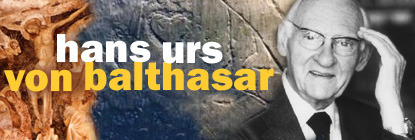
• Biography of Hans Urs von Balthasar
• All Ignatius Press books by Hans Urs von Balthasar
• Excerpts from the writings of Hans Urs von Balthasar
• Ignatius Insight Articles about Hans Urs von Balthasar
• Pope Benedict XVI Praises Hans Urs von Balthasar (Oct. 2005)
November 26, 2011
The Essence of Advent
A Scriptural Reflection on the Readings for Sunday, November 27, 2011, the First Sunday of Advent | Carl E. Olson
Readings:
• Is 63:16b-17, 19b; 64:2-7
• Ps 80:2-3, 15-16, 18-19
• 1 Cor 1:3-9
• Mk 13:33-37
When the Son of God came the first time, St. Augustine stated in a sermon, "he came in obscurity, it was to be judged. When he comes openly it will be to judge." This observation is a helpful (and challenging!) bridge between last week's Gospel reading—the parable of the sheep and the goats—and today's Gospel reading, proclaimed on this, the first day of the liturgical year.
"Advent" comes from the Latin word adventus, which in turn is a translation of the Greek word, parousia. Both words indicate a coming or arrival and a presence. Advent focuses simultaneously on the first and second comings of Christ, and his presence with us now, especially in the blessed sacrament of the Eucharist. The parousia—sometimes called the second coming of Christ—will be realized fully at the end of time, but has already been initiated by the Incarnation, which revealed the glory of God among men (cf., Jn 1:14).
While some Christians fixate upon the return of Christ to the point that little else matters, Catholics should—especially during Advent—gaze upon and receive the Eucharist, knowing that it is why anything matters at all. In doing so, we proclaim his coming, anticipating the culmination of time and history.
"By gazing on the risen Christ," wrote Joseph Cardinal Ratzinger, in Eschatology, his book on death and eternal life, "Christianity knew that a most significant coming had already taken place. It no longer proclaimed a pure theology of hope, living from mere expectation of the future, but pointed to a 'now' in which the promise had already become present. Such a present was, of course, itself hope, for it bears the future within itself." (Eschatology, 44-45).
The Son of God transcends past, present, and future. Yet he became man, entering into time and history in the most stunning and unexpected way: in the darkness of a cave. Nearing the end of his earthly ministry, facing death, he exhorted his disciples, "Be watchful! Be alert!" Thus he emphasized that the second coming would also be unexpected and sudden.
These exhortations to vigilance, although mysterious, helped the early Christian to comprehend the deeper meaning of the destruction of the Temple in A.D. 70. They could see that the Church is the new temple, for the Church is the mystical body of Christ. "When he announces its destruction," the Catechism explains, "it is as a manifestation of his own execution and of the entry into a new age in the history of salvation, when his Body would be the definitive Temple" (par. 593).
Our Lord first came as a humble babe, hidden in a manger, surrounded by family and the shepherds who responded to the glorious news given by angels. He now comes to us in humility, hidden under the form of bread and wine, within the household of God, giving himself to his sheep—those who have responded to the saving message of the Gospel. This gift of the Son is why we can call God our Father. It is also why we acknowledge, as did the prophet Isaiah, our desperate need to be molded and shaped by the loving hands of the Creator: "Yet, O LORD, you are our father; we are the clay and you the potter: we are all the work of your hands."
Jesus Christ will one day come in again in power and glory, to judge the living and the dead. Every man will face judgment; every deed will be revealed. "Even now," St. Augustine told his flock, the Savior "does not keep silent, if there is anyone to listen. But it says he will not keep silent then"—at the final judgment—"because his voice will be acknowledged even by those who despise it."
Those who despise and ignore the words of Christ are asleep, cocooned in spiritual slumber and sloth. Those who are alert and watch are aware of the Lord's presence. They long for his coming. They place their hope in the Lord. Such is the essence of Advent.
(This "Opening the Word" column originally appeared in the November 30, 2008, edition of Our Sunday Visitor newspaper.)
November 25, 2011
"The more I study New Testament, the better Jew I become."
A group of Jewish scholars, led by Dr. Amy-Jill Levine (professor of New Testament and Jewish studies at Vanderbilt) and Dr. Marc Z. Brettler (professor of biblical studies at Brandeis University), have recently produced The Jewish Annotated New Testament:
The book [Levine] has just co-edited with a Brandeis University professor, Marc Zvi Brettler, "The Jewish Annotated New Testament" (Oxford University Press), is an unusual scholarly experiment: an edition of the Christian holy book edited entirely by Jews. The volume includes notes and explanatory essays by 50 leading Jewish scholars, including Susannah Heschel, a historian and the daughter of the great theologian Abraham Joshua Heschel; the Talmudist Daniel Boyarin; and Shaye J. D. Cohen, who teaches ancient Judaism at Harvard.
As any visitor to the book expo at this conference discovered, there is a glut of Bibles and Bible commentaries. One of the exhibitors, Zondervan, publishes hundreds of different Bibles, customized for your subculture, niche or need. Examples include a Bible for those recovering from addiction; the Pink Bible, for women "who have been impacted by breast cancer"; and the Faithgirlz! Bible, about which the publisher writes: "Every girl wants to know she's totally unique and special. This Bible says that with Faithgirlz!™ sparkle!"
Nearly all these Bibles are edited by and for Christians. The Christian Bible comprises the Old and New Testaments, so editors offer a Christian perspective on both books. For example, editors might add a footnote to the story of King David, in the Old Testament books I and II Samuel, reminding readers that in the New Testament David is an ancestor of Jesus.
Jewish scholars have typically been involved only with editions of the Old Testament, which Jews call the Hebrew Bible or, using a Hebrew acronym, the Tanakh. Of course, curious Jews and Christians consult all sorts of editions, without regard to editor. But among scholars, Christians produce editions of both sacred books, while Jewish editors consult only the book that is sacred to them. What's been left out is a Jewish perspective on the New Testament — a book Jews do not consider holy but which, given its influence and literary excellence, no Jew should ignore. ...
Thirty years ago, when Dr. Levine was starting graduate school, an aunt asked her why she was reading the New Testament. "I said, 'Have you read it?' and she said, 'No, why would I read that hateful, anti-Semitic disgusting book?' "
But Dr. Levine insists her aunt, like other Jews, had nothing to fear. "The more I study New Testament," Dr. Levine said, "the better Jew I become."
Read the entire New York Times piece, "A New Look at the New Testament, by Jews, for Jews" (Nov. 25, 2011; ht: CF).
The Ignatius Press Black Friday Sale! 50% off select titles

The Ignatius Press Black Friday Sale! 50% off titles listed below
Offer ends Monday, November 28th, 2011 at 12:00 midnight EST. These prices are available online only through Ignatius.com.
To help you start your Christmas shopping early, Ignatius Press is offering a special 50% off sale for a limited time on some of our most popular books and films. Books for Advent or Christmas, picture books for the family, books by or about Pope Benedict, great novels, books on saints, the Mass, and much more. Plus inspiring feature films and documentary films. All at 50% off!
 Jesus of Nazareth
Jesus of Nazareth
Holy Week: From the Entrance Into Jerusalem To The Resurrection
Pope Benedict XVI
What happened in the final week of Jesus of Nazareth's earthly life? In Jesus of Nazareth: Holy Week: From the Entrance Into Jerusalem to the Resurrection, Pope Benedict takes up that and other crucial questions. This is a book for Christians—Catholics, Protestants, Orthodox—as well as other believers and nonbelievers. Benedict brings to his study the vast learning of a brilliant scholar, the passionate searching of a great mind, and the deep compassion of a pastor's heart. In the end, he dares readers to grapple with the meaning of Jesus' life, teaching, death, and Resurrection.
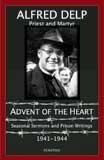 Advent of the Heart
Advent of the Heart
Seasonal Sermons and Prison Writings - 1941-1944
Alfred Delp
Fr. Alfred Delp,S.J., was a heroic German Jesuit priest who was imprisoned and martyred by the Nazis in a Nazi death camp in 1945. His approach to Advent, the season that prepares us for Christmas, is what Fr. Delp called an "Advent of the heart." More than just preparing us for Christmas, it is a spiritual program, a way of life. He proclaimed that our personal, social and historical circumstances, even suffering, offer us entry into the true Advent, our personal journey toward a meeting and dialogue with God. Indeed, his own life, and great sufferings, illustrated the true Advent he preached and wrote about.
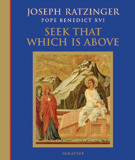 Seek that Which is Above
Seek that Which is Above
Joseph Cardinal Ratzinger
In this beautifully illustrated book, Joseph Ratzinger (Pope Benedict XVI) gives us profound meditations on what our life in Christ should be like as it is lived through the various Seasons and Feasts of the liturgical year.
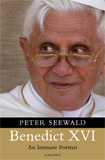 Benedict XVI
Benedict XVI
An Intimate Portrait
Peter Seewald
In the person of Benedict XVI, the Church has a Pope who is one of the most significant of Europe's intellectuals. The journalist Peter Seewald, who has known Ratzinger since 1992, conducted the "longest interviews in Church history" with him, for two books which were best-sellers world-wide, Salt of the Earth, and God and the World. Now, for the first time, Seewald describes these intensive encounters in detail, and draws a portrait of this brilliant theologian who has put his life entirely at the service of the Catholic Church. This book is also the story of a long dialogue that changed Seewald's life.
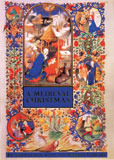 A Medieval Christmas
A Medieval Christmas
Frances Lincoln
The well-loved story is recounted in the words of the Revised Standard Version of the Bible. This masterly translation of the New Testament complements the magnificent illustrations, making this the perfect Christmas gift to be treasured by young and old.
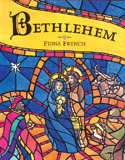 Bethlehem
Bethlehem
Text from the RSV Bible
Fiona French
In the magnificent words of the Revised Standard Version of the New Testament, the story of the first Christmas unfolds. Beginning on the road to Bethlehem, through the Holy Family's flight by night to Egypt, breathtaking panoramas in a kaleidoscope of colors illuminate the story's miraculous events and timeless beauty of the Savior's birth. This book is a glorious sequel to her original, Easter.
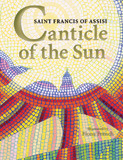 Canticle of the Sun
Canticle of the Sun
Saint Francis of Assisi
Fiona French
Inspired by Byzantine art, acclaimed artist Fiona French presents twelve mosaic tableaux that light up a sparkling translation of the canticle. The hymn is a beautiful poem, and a profound prayer, touching on the incredible beauty of God's creation, but also the profound meaning and importance of how we give praise to God when we forgive.
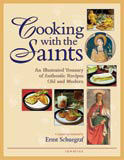 Cooking With the Saints
Cooking With the Saints
An Illustrated Treasury of Authentic Recipes Old and Modern
Ernst Schuegraf
Ernst Schuegraf combines his unusual combination of skills in cooking, photography, fine arts and knowledge of saints' lives to present this unique cookbook that captures a wonderful variety of recipes and inspiring biographies of each saint.
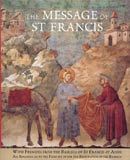 The Message of St. Francis
The Message of St. Francis
This is a celebration of the life of St. Francis, great lover of God, man and nature. Extracts from his writings and from biographies of the saint are selected by Sister Nan, a member of the Community of St. Francis in London. Illustrated with stunning details and images from the fresco-cycle in the Basilica at Assisi, the book invites the reader to step into the world of St. Francis for a unique spiritual experience.
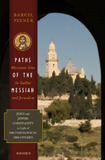 Paths of the Messiah
Paths of the Messiah
Sites of the Early Church from Galilee to Jerusalem
Bargil Pixner
With reverence for the sites associated with the life of Christ, Bargil Pixner dedicated much of his life to archeological research in the Holy Land, becoming famous for his discovery of the Essene Gate in Jerusalem and the town of Bethsaida by the Sea of Galilee. Gathered into this one volume are the principal fruits of Father Pixner's research: explanations of numerous archeological discoveries in the Holy Land accompanied by photos, illustrations and maps.
[image error]Treasury of Wisdom
The Words of Jesus
Yvonne Whiteman
Here, retold in the words of the Revised Standard Version Bible, are some of the most memorable sayings of Jesus recorded in the Gospels of his disciples Matthew, Mark, Luke and John. Illuminating Jesus' words are over 40 paintings by celebrated artists such as Raphael, Masaccio, Piero della Francesca, Caravaggio, Fra Angelico, Poussin and Millet. In this beautiful hardcover keepsake with a silk ribbon marker, the words and paintings combine to create a treasury that will appeal not only to Christian but to everyone searching for spiritual truth.
Pope Benedict XVI
A Servant of the Truth
Peter Seewald
This book, written mainly by Seewald, describes the paths of Joseph Ratzinger's life from his birthplace in Bavaria all the way to being the first German Pope in 482 years. It is illuminated with a stunning collection of some of the most personal, and most surprising photographs. These show the Pope as he really is: "a humble servant in the vineyard of the Lord".
Behind Bella
The Amazing Stories of Bella and the Lives it's Changed
Tim Drake
Profusely illustrated with many photos from the acclaimed movie and the making of it, this beautiful deluxe volume provides a behind-the- scenes look into the beloved, award-winning feature film from Metanoia Films.
Parenting on Purpose
7 Ways to Raise Terrific Christian Kids
Jason Free
Raising terrific, happy Christian kids doesn't happen by accident. In Parenting on Purpose, Jason Free provides you with all you need to develop a personal plan for leading your kids to a clear awareness of their Christian identity, so that Christian values, beliefs and attitudes will become as natural to them as breathing.
Works of Love Are Works of Peace
A Photographic Record
Michael Collopy
More than four years in the making and published with the permission and cooperation of Mother Teresa of Calcutta, this large format 224 page book offers the most comprehensive photographic documentation of the apostolic work and prayer life of the Missionaries of Charity yet published. Destined to serve as an important historical record, this "illustrated prayer book" vividly portrays the peace and joy that can come when "small things" are done with great love.
The Death of a Pope
A Novel
Piers Paul Read
Piers Paul Read's powerful tale combines vivid characters, high drama, love, betrayal, faith, and redemption in a story of intrigue, of church espionage, and an attempt to destroy the longest continuous government in the world—the Papacy. The Death of a Pope races toward an unexpected and unforgettable conclusion.
Saint Therese of Lisieux
Her Family, Her God, Her Message
Fr. Bernard Bro
Fr. Bernard Bro, director of the French publishing house, Éditions du Cerf, and a key figure in publishing the definitive editions of Thérèse's writings, decided to set forth those aspects of her life, personality, and writing that do indeed mark Thérèse of Lisieux as one of the truly great exponents of Catholic doctrine.
Mother Benedict
Foundress of the Abbey of Regina Laudis
Antoinette Bosco
This is the inspiring story of Mother Benedict Duss and the famous Benedictine monastery she founded in Bethlehem, Connecticut, the Abbey of Regina Laudis, a large flourishing community of contemplative Benedictine nuns.
Before the Dawn
Autobiographical Reflections by Eugenio Zolli, Former Chief Rabbi of Rome
Eugenio Zolli
This is the remarkable and inspiring story of how the famous and revered Chief Rabbi of Rome, Israel Zolli, became a Christian and entered the Catholic Church after World War II. Zolli was a world renowned Jewish leader and Scripture & Talmudic scholar, and an authority on Semitic philology.
The Judge
William P. Clark, Ronald Reagan's Top Hand
Paul Kengor, Patricia Clark Doerner
The most important biographical record of the Reagan years—from the Reagan governorship to the 40th president's period in the White House—has not been written, until now: it is the story of Ronald Reagan's indispensable man, confidant, and single most important adviser: William P. Clark, known to many as simply The Judge.
The Templars
Knights of Christ
Regine Pernoud
For centuries, historians and novelists have portrayed the Knights Templar as avaricious and power-hungry villains. Indignant at the discrepancies between the fantasies, on which "writers on history of every kind and hue have indulged themselves without restraint", and the available evidence, Régine Pernoud draws a different portrait of these Christian warriors.
The Mass and the Saints
Thomas Crean, O.P.
The Mass and the Saints is a work both of deep spirituality and profound insight into the glories of the Church's liturgy. It brings together passages from great spiritual writers throughout the ages, from all centuries in which the Mass has been offered.
The Cantata of Love
A Verse by Verse Reading of The Song of Songs
Blaise Arminjon, S.J.
What book of the Old or New Testament has generated the most commentaries in the history of the Church? Not John's Gospel, not Paul's letter to the Romans, not the prophet Isaiah, no, it is the Song of Songs. The author gives us a verse by verse reading of the Song of Songs which will deepen the spiritual lives of all of us—a deepening rooted in God's word and the most profound Catholic tradition.
We Look for a Kingdom
The Everyday Lives of Early Christians
Carl Sommer
Carl Sommer presents a popular study of the faith and life of the early Christians in the first two centuries after Christ. Using documentary evidence and archaeological records, Sommers reconstructs the lives of the early Christians in order to "introduce the treasures of early Christianity to a large number of modern readers".
Max and Benedict
A Bird's Eye View of the Pope's Daily Life
Jeanne Perego
This lovely illustrated book for children (of all ages!) is a sequel to Joseph and Chico, the international best-seller that told the story of the life of Pope Benedict XVI from his youth through his election as the Pope.
Sophia House
Michael O'Brien
Sophia House is set in Warsaw during the Nazi occupation. Pawel Tarnowski, a bookseller, gives refuge to David Schäfer, a Jewish youth who has escaped from the ghetto, and hides him in the attic of the book shop. Throughout the winter of 1942-43, haunted by the looming threat of discovery, they discuss good and evil, sin and redemption, literature and philosophy, and their respective religious views of reality. Decades later, David becomes a convert to Catholicism, is the Carmelite priest Fr. Elijah Schäfer called by the Pope to confront the Anti-christ in Michael O'Brien's best-selling novel, Father Elijah: An Apocalypse.
A Cry of Stone
Michael O'Brien
In this fifth novel in his series, Children of the Last Days, Michael O'Brien explores the true meaning of poverty of spirit. Loosely based on the real lives of a number of native North Americans, A Cry of Stone is the fictional account of the life of a native artist, Rose Wâbos.
Through Shakespeare's Eyes
Seeing the Catholic Presence in the Plays
Joseph Pearce
In The Quest for Shakespeare, which has been made into an EWTN television series, Pearce delved into the known biographical evidence for Shakespeare's Catholicism. Here the popular and provocative author digs into the plays, which were written and first performed during the English crown's persecution of Catholics.
A Postcard from the Volcano
A Novel of Pre-War Germany
Lucy Beckett
A Postcard from the Volcano opens with the outbreak of World War I and the Prussian pride and patriotism that blind the noble von Hofmannswaldau family to the destruction that lies ahead for their country. The well-researched narrative follows the young count as he leaves home to finish his education and ends up a stranger in the land of his birth.
Tolkien: A Celebration
Collected Writings on a Literary Legacy
Joseph Pearce
Tolkien: A Celebration includes personal recollections by George Sayer and Walter Hooper, and many fascinating pieces by authors such as James Schall, S.J., Stratford Caldecott and Stephen Lawhead, exploring the threads of inspiration and purpose in his major works. These dip into subjects such as The Sense of Time in Lord of the Rings, Tolkien: Master of Middle-earth, and Tolkien, Lewis and Christian Myth.
DVDs
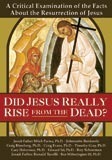 Did Jesus Really Rise from the Dead?
Did Jesus Really Rise from the Dead?
If Christ has not been raised, said the Apostle Paul, Christian faith is in vain. The Resurrection of Jesus of Nazareth is not an incidental or minor aspect of Christianity. If Jesus did not rise from the dead, Christianity is certainly false. Did Jesus Really Rise from the Dead? carefully scrutinizes the historical evidence. Rather than accept Christian belief blindly, top scholars and biblical historians critically examine alternative explanations. In the end, they show why it is a matter of sound reason as well as faith to affirm what the early Church proclaimed: Jesus is risen.
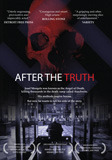 After the Truth
After the Truth
This powerful, award-winning film tells the story of one of the greatest challenges the legal system has ever faced. Dr. Josef Mengele, the infamous "Angel of Death" in Auschwitz, and one of the most wanted Nazi war criminals, turns himself in after 30 years in hiding to tell his "truth" to the world. Thus ensues a battle between conscience and evil...
The Small Miracle
A beautiful, touching story based on the book by Paul Gallico about a young Italian boy in Assisi who travels to Rome to ask the Pope's permission to let him take his dying donkey to the tomb of St. Francis to pray for a miraculous cure. Shot on site in Assisi and Rome.
Changing Sides
How a Pro-life Presence Changed the Heart of a Planned Parenthood Director
This film tells the powerful true story of the conversion of a dedicated Planned Parenthood director to a leading Pro-life Activist. Abby Johnson was the director of the abortion facility that was the launching pad of the bold new pro-life effort - 40 Days for Life.
Lourdes
A Story of Faith, Science and Miracles
Bernard Guillaumet, a non-Christian French journalist, is assigned the job of doing a story on Lourdes in the late 1990s. While researching for his report on Lourdes, Bernard comes across the pages of an old family manuscript. The manuscript was written by his ancestor, Henri Guillaumet, a positivist scientist and nonbeliever who met Bernadette at Lourdes in 1858. This intriguing film uses the pages of the manuscript to trace the stories of three lives- Bernadette, Henry and Bernard, three characters whose lives intertwine as they pursue parallel journeys according to the designs of Providence.
Don Matteo
Don Matteo Bondini (Terence Hill) isn't your everyday parish priest. The former missionary is blessed with extraordinary intuition and a deep understanding of the human soul—which comes in handy when a crime has been committed. This set of 12 episodes from the most popular series on Italian TV gives us Don Matteo at his best.
November 24, 2011
Collin Raye's new CD, "His Love Remains", is exceptional
This evening, country singer Collin Raye will be on "The World Over with Raymond Arroyo" to talk about music, life, death, and faith:
The death of his 10 year old granddaughter in 2010 literally knocked Collin Raye to his knees, and challenged his faith  like never before! Don't miss his story Thursday/ Thanksgiving Night on worldwide Television on EWTN at 8:00pm Est. Raye, who scored 16 #1 hits in country music, tells his story of conversion, the loss of Haley, and why he finally recorded a religious/ inspirational CD, His Love Remains. This is one for the entire family Thanksgiving night, his story, his incredible performance of GIVE ME JESUS and more.
like never before! Don't miss his story Thursday/ Thanksgiving Night on worldwide Television on EWTN at 8:00pm Est. Raye, who scored 16 #1 hits in country music, tells his story of conversion, the loss of Haley, and why he finally recorded a religious/ inspirational CD, His Love Remains. This is one for the entire family Thanksgiving night, his story, his incredible performance of GIVE ME JESUS and more.
I recently bought Raye's new CD, His Love Remains, after listening to some clips. Although I was familiar with some of Raye's country music (specifically, hits such as "Love, Me" and "Little Rock"), this album was a surprise as I didn't know that Raye was a Catholic, nor did I fully appreciate the beauty of his amazing tenor. At a point in life (Raye is in his early fifties) when many singers lose power, range, and clarity, Raye's voice is an effortless, pure instrument. And on His Love Remains he clearly pours all of his talents into a collection of hymns that express his faith and beliefs very clearly.
While some contemporary Catholic music (and I use that term rather broadly) often suffers from mediocre, overwrought production, Raye wisely uses a very spare, mostly acoustic approach (no "wall of sound", thankfully!), which not only highlights his voice, but brings the lyrics and melodies even further to the forefront. Highly recommended.
Here is a promotional video with clips from the album and interviews with Raye and guest singers, Andrea Thomas and Marie Bellet:
His Love Remains is available from Ignatius Press.
Fr. Kenneth Baker, S.J., on the meaning of Thanksgiving

From the November 2011 editorial for Homiletic & Pastoral Review:
Thanksgiving Day, on the last Thursday in November, is a major event in American culture and life. On this day, most Americans want to be, and try to be, home with their family. The feast is 400 years old, and was made a national holiday by President Lincoln in 1863.
In its origins, going back to the pilgrims at Plymouth, Massachusetts, in 1621, the celebration was primarily religious. After bringing in the harvest, and having profited from the abundance of nature, the pilgrims, trying to survive in a huge, untamed and dangerous new country, set aside a day to give thanks to Almighty God for his many benefits. It was fitting and proper that they should do so. We can thank Mr. Lincoln for setting aside one day in the year to give thanks to God for his goodness to us, personally, and for the abundance of nature that sustains us in life.
Most Americans still believe in God, and many go to church on Sunday, but secularism and materialism have taken their toll, so that the country, as such, is not as religious as it was in the beginning, or even as it was in the time of Lincoln. Since about the 1960s, there has been a concerted effort, on the part of many leaders in education, politics and the media, to ignore God, and to remove him from the public square. In a certain sense, belief in God is on the defensive, and secularism is constantly on the attack. Human freedom has been made into an absolute, and so God, with his Ten Commandments, is portrayed as an enemy of human freedom. That is just the opposite of the truth, since obedience to God, and love of him, is what makes a person truly free— that is, free to be what he should be, not free to do whatever he feels like doing. Consequently, for many Americans, Thanksgiving Day no longer has a religious meaning; rather, it is a day off from work, time for a turkey dinner and four-day weekend. For these folks, one wonders to whom their thanksgiving is directed. Is it to Uncle Sam?
Read the entire editorial on HPRweb.com.
November 23, 2011
Benedict XVI reflects on trip to Africa, the continent of hope
From Vatican Information Service:
VATICAN CITY, 23 NOV 2011 (VIS) - The Holy Father dedicated his general audience, held this morning in the Vatican's Paul VI Hall, to reflections on his recently concluded apostolic trip to Benin. The trip had a threefold purpose: marking the 150th anniversary of evangelisation in that region, consigning the Post-Synodal Apostolic Exhortation "Africae munus", and paying homage to the late Beninese Cardinal Bernardin Gantin.
The Pope reminisced about the various stages of his journey, beginning with his visit to the basilica of the Immaculate Conception in Ouidah where he "placed the fruits of the Second Special Assembly for Africa of the Synod of Bishops at the feet of the Blessed Virgin. ... Christian communities in Africa", he said, "are now called to renew themselves in the faith, in order to serve reconciliation, justice and peace. They are invited to inner reconciliation in order to become joyful instruments of divine mercy, each contributing to the common good with its own spiritual and material wealth.
"Such a spirit of reconciliation is of course also indispensable in civil life", the Pope added, "and has to remain open to the hope which must also animate the socio-political and economic life of the continent". The Pontiff then turned to focus on his meeting with civil, political and religious authorities in Benin, to whom he had likewise "stressed the hope that must drive the development of the continent", at the same time "highlighting the ardent desire for freedom and justice which has moved the hearts of so many African peoples, especially in recent months".
Speaking of the celebration of the Eucharist at the "Stade de l'amitie" in Cotonou, Benedict XVI noted that the presence of both young and old was "a marvellous testament to the fact that the faith unites the generations and responds to the challenges of every stage of life". During that celebration, the Pope gave the presidents of African episcopal conferences the Post-Synodal Apostolic Exhortation "Africae munus", in which, he said, "the faithful will find the fundamental guidelines to lead and stimulate the journey of the Church in Africa, which is increasingly called to be 'salt of the earth' and 'light of the world'".
The Holy Father also dwelt on his meeting with children and sick people at the church of St. Rita and at the Home of Peace and Happiness, run by sisters of Mother Teresa's Missionaries of Charity. There he had "truly tasted the joy of life, the delight and enthusiasm of the new generations who represent the future of Africa", and had seen "how love and solidarity can cause the power and affection of the risen Christ to be present, even in weakness".
The commitment of clergy, religious and laity is "a sign of sure hope for the future of the Church in Benin", said the Holy Father who also recalled how he had encouraged priests to follow "the path of sanctity, in the awareness that the ministry is not simply a social function, but a means for bringing God to man and man to God".
The Holy Father's meeting with the Beninese episcopate had focused on "the origins of the announcement of the Gospel in their country, by the work of missionaries", and on his exhortation to them "constantly to rediscover Holy Scripture as a source of spiritual renewal and an opportunity to intensify the faith".
"In Africa", the Holy Father explained, "I saw a freshness in the 'yes' to life, a freshness of religious meaning and hope, a holistic vision of reality where God is not confined to that positivist perspective which, in the final analysis, extinguishes all hope. This tells us that the continent contains reserves of life and vitality for the future, reserves upon which we can rely, upon which the Church can rely.
"My journey", he added in conclusion, "was also by way of being an appeal to Africa to concentrate every effort on announcing the Gospel to those who do not yet know it, to renew the commitment to evangelisation, to which each member of the baptised is called by promoting reconciliation, justice and peace".
• The Post-Synodal Apostolic Exhortation, Africae Munus, "In Service to Reconciliation, Justice and Peace" | Pope Benedict XVI, November 19, 2011
Priestly Formation Today

Priestly Formation Today | An Interview with Deacon James Keating, Director of Theological Formation at the Institute for Priestly Formation, Creighton University | Ignatius Insight | November 23, 2011
Deacon James Keating, Ph.D., is Director of Theological Formation at the Institute for Priestly Formation at Creighton University, Omaha. Before joining the staff of the IPF Deacon Keating taught moral and spiritual theology for thirteen years in the School of Theology at the Pontifical College Josephinum in Columbus, Ohio. He has given over 400 workshops, retreats and days of reflection on the Catholic spiritual/moral life. In the field of his professional research, the interpenetration of the spiritual and moral life, Deacon Keating has authored or edited ten books and dozens of essays for theological journals, including "Pastoral Authority and Spiritual Warfare" for the November 2011 issue of Homiletic & Pastoral Review. He was recently interviewed by Ignatius Insight about the state of priestly formation today and the ongoing challenges faced by seminarians and priests.
Ignatius Insight: How did you arrive at being a deacon and then working at the Institute for Priestly Formation as Director of Priestly Formation?
Deacon Keating: I was ordained deacon ten years ago for the diocese of Columbus, Ohio. I had been praying about it for about seven years before but it was not the time to pursue it since Marianne and I were raising babies. In about 1997, Marianne turned to me during a walk home from Sunday Mass and said, "I think it is time for you to see if God wants you to be a deacon."
Obediently following that spousal advice I began the process of application and formation. At that time professionally I was a seminary professor at the Pontifical College Josephinum and had been since 1993. During my time at the Josephinum I gave an address to the Federation of Seminary Spiritual Directors, and in the audience were the founders of IPF. They asked me to come out to Omaha and give some lectures during their seminarian summer program, which I did for a couple of years. After that they offered me a full time position in 2006.
Ignatius Insight: In general, what are some of the ways that priestly formation today differs from formation in the 1970s-'80s?
Deacon Keating: Generally speaking, I think there was a great deal of doctrinal and lifestyle experimentation during the 1970s and 1980s which was unhelpful to priestly ministry and identity. Here I am speaking about the de-emphasis upon priestly identity as sacred, and in its place the promotion ofpriests as competent professionals akin to social workers and psychologists. There was a neglect in priestly formation to educate men in the sacred character of priesthood both in spiritual formation and in theological reflection.
Along with this there had been tolerance of doctrinal dissent in some diocesan seminaries which then influenced the way priests saw their role as pastors—not as teachers, fathers, but as professorial moderators in the forum of ideas. Hence we saw much experimentation substantively and methodologically in catechesis. The publication of the Catechism of the Catholic Church by Bl. John Paul II was a direct response to this doctrinal confusion. Today seminarians are no longer taught that they are the "same as everyone" or "one of the boys", but that they are called to a permanent openness to, and a deep share in, the sacrificial love of Christ. This "character" is Christ's gift to them, not an emblem of entitlement. Most diocesan seminaries now proudly teach only what is taught by the Church as true, and if there is theological speculation, it is speculation about the depth and contour of that truth, not whether there is such truth.
Carl E. Olson's Blog
- Carl E. Olson's profile
- 20 followers



